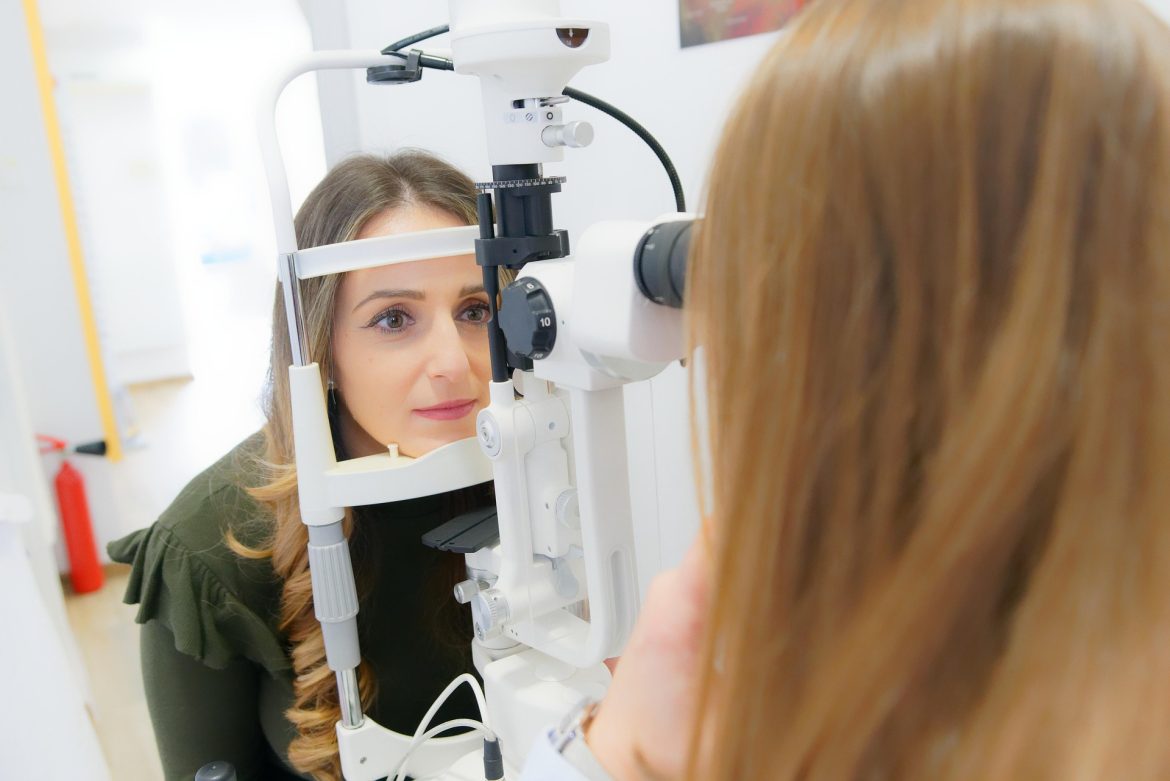![]()
According to a study done in 2019, 81% of Los Angeles Dodgers and New York Mets players have a visual acuity of 20/15 or better. If you’ve seen the number of times those guys strike out, you might think: “Is 20/15 vision good?”
In all seriousness, 20/20 vision is supposedly the gold standard for eyesight. What does 20/15 even mean?
In this article, we’ll explain everything, including how 20/15 compares to the average person’s eyesight and whether or not this score comes with any superpowers.
Understanding Visual Acuity
The 20/20 standard for “perfect” vision was established in the early 20th century by eye care professionals who observed that it was the common visual acuity of the population.
Visual acuity indicates how well you see at specific distances. 20/20 vision means you can see an object clearly from 20 feet away. So, having 20/15 vision means you can see from 20 feet away what people with normal vision see from 15 feet away.
Yep … it’s practically a superpower!
Having said that, I’m sure you can see how 20/15 might widely be considered “better than perfect.” While it is not Superman-level, it is exceptional! It’s a benefit that can serve you well in your day-to-day life.
How Does 20/15 Vision Help You in Daily Life?

If you are one of the lucky ones to have been blessed with 20/15 vision, you get to enjoy a few advantages.
- Better Visual Clarity: You see objects more clearly than a friend standing right next to you with 20/20 vision. They would have to walk five feet closer to see the same thing you can see right where you are.
- Ability to Detect Objects (and Risks!) Sooner: Not only can you see road signs and other objects before others, but you can also potentially detect risks and dangers faster. If you’re driving, you might spot an unleashed dog, kids playing, or a parent walking a baby in a stroller before anyone else.
- Better Night Vision: Although the correlation might not seem obvious, people with 20/15 vision generally enjoy better night vision.
- Less Eye Strain: If you have 20/15 vision, you are less likely to squint to see things. Unlike those with less-than-perfect vision, you don’t “struggle” to see at varying distances.
- Better Fit for Certain Professions: Your super eyes can work for you! If you’re in sports, aviation, medicine (especially surgical medicine), and the like, you might perform better because of your 20/15 vision.
Factors Affecting Visual Acuity
Your 20/15 vision is likely the result of several factors. Some are within your control, allowing you to maintain your visual acuity proactively.
Avoiding smoking and excessive screen time can help you retain your visual sharpness and reduce your risk of eye diseases, such as cataracts, eye strain, and dry eye syndrome.
Lifestyle choices, including sun exposure and diet, may also affect your visual acuity. A balanced diet is key to good health, including eye health.
Consider loading up on food rich in omega-3 fatty acids and antioxidants. Likewise, if you’re staying outside during the daytime, protect your eyes by wearing sunglasses with sufficient UV protection.
Unfortunately, other contributors are largely out of your hands. For example:
- Genetics: Genes play a part in how your cornea is shaped, your retinal cell distribution, and your lens curvature. These impact visual acuity. You can inherit 20/15 vision, just as you can inherit poor vision and other refractive errors. Your genes also determine your predisposition to age-related eye conditions, such as cataracts.
- Age: As you age, your eyes may weaken. A once 20/15 visual acuity score can degrade. At age 40, the lenses of your eyes begin to harden. They lose flexibility, which affects how you see things close by (a condition called presbyopia). Eye degradation can also lead to cataracts, macular degeneration, and glaucoma.
- Underlying Eye Conditions: The health of your eyes affects how sharp they are. If you have refractive errors, such as nearsightedness (myopia), farsightedness (hyperopia), or an irregularly shaped lens (astigmatism), your 20/15 will most likely decline.
- Medical Conditions: These can include diabetic retinopathy (blood vessel damage in the retina caused by diabetes), uveitis (inflammation of the eye’s middle layer or the uvea), and more.
Finally, environmental factors may impact how well you see. Your visual health can be affected if you live or work in an environment that exposes you to hazardous chemicals, pollutants, and suboptimal visual conditions.
Can You Get 20/15 Vision?

Knowing the factors that determine your visual acuity, you might wonder if it’s possible to achieve 20/15 vision if you don’t already have it. The answer here is a bit complicated.
Some people claim to have achieved 20/15 vision after undergoing LASIK surgery. These would be exceptional results for eye surgery meant to fix refractive errors. Plus, LASIK carries risks, so others opt for corrective lenses to improve their eyesight … but to a 20/15 vision level? Generally, 20/20 is the goal.
My best advice is that taking care of your eyes reaps long-term rewards. Small lifestyle changes like using sunglasses with ample UV protection, eating a balanced diet, getting enough sleep, and stepping away from your digital devices once in a while. You may not get 20/15 vision following these recommendations, but you’ll be all the better for it.
Final Thoughts on 20/15 Vision
Is 20/15 vision good? Yes, but remember that other factors affect eye health. You have to consider your physiological limit and the environment, especially when it comes to improving your vision acuity.
Instead of targeting 20/15 visual acuity, focus on your overall eye health. Get regular eye exams, eat better, and wear protective glasses. Consider smoking cessation and limiting your screen time, as well. These changes can make a huge difference in your life, whether you have 20/15 vision or not.


